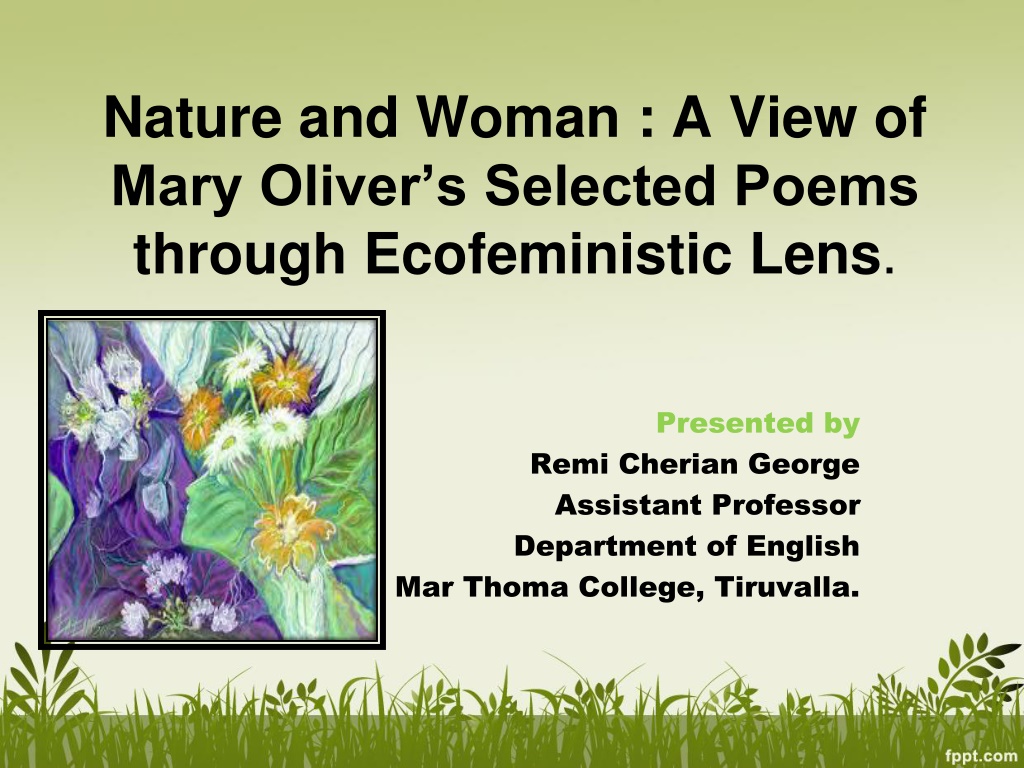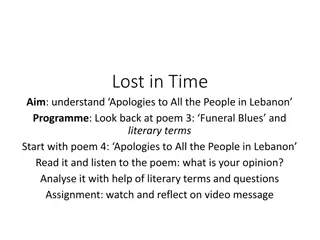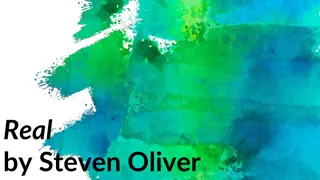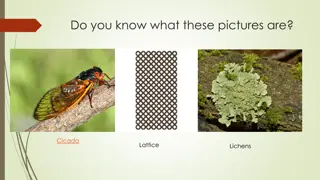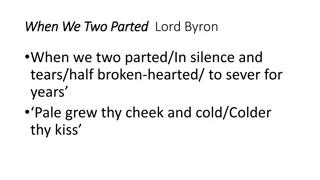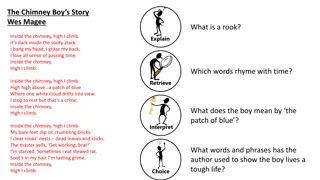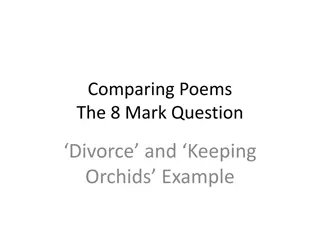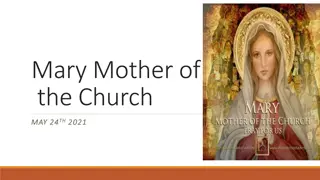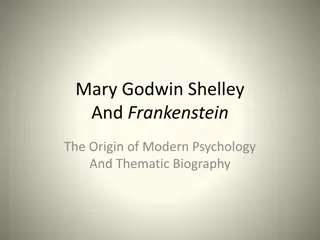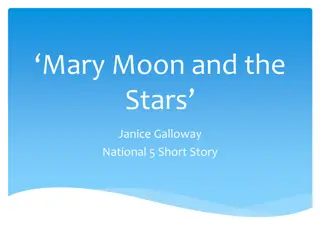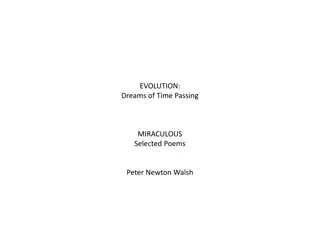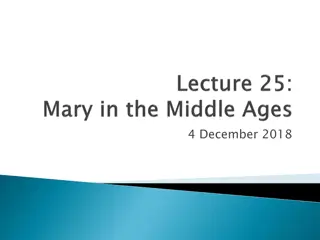Ecofeministic Exploration of Mary Oliver's Poems
Delve into the intertwining themes of nature and womanhood in Mary Oliver's selected poems through an ecofeministic perspective. Explore the deep connections between the environment, feminism, and poetic expression, shedding light on the soulful dialogues between humanity and the natural world.
Download Presentation

Please find below an Image/Link to download the presentation.
The content on the website is provided AS IS for your information and personal use only. It may not be sold, licensed, or shared on other websites without obtaining consent from the author.If you encounter any issues during the download, it is possible that the publisher has removed the file from their server.
You are allowed to download the files provided on this website for personal or commercial use, subject to the condition that they are used lawfully. All files are the property of their respective owners.
The content on the website is provided AS IS for your information and personal use only. It may not be sold, licensed, or shared on other websites without obtaining consent from the author.
E N D
Presentation Transcript
Nature and Woman : A View of Mary Oliver s Selected Poems through Ecofeministic Lens. Presented by Remi Cherian George Assistant Professor Department of English Mar Thoma College, Tiruvalla.
What is Ecofeminism? Domination of both nature and women by men leads to ecological crisis Synthesizes feminism and environmentalism Coined by Fran oise d Eaubonne Ascribes feminine values to nature Capitalism and industrialism as products of patriarchy
An American poet born in 1935. Winner of the prestigious Pulitzer Prize and the National Book Award. First collection No Voyage and Other Poems was published in 1963. Clear and poignant observances of natural world. Poems as antidote to inattention and baroque conventions of everyday life.
Poems to be Analysed Ecofeministically 1. Some Questions You Might Ask 2. Sleeping in the Forest 3. Aunt Leaf 4. The Honey Tree 5. The Fish 6. Such Singing in Wild Branches 7. Summer Day
Some Questions You Might Ask Questions man s self centredness Every living being on earth has a soul Interconnected nature of living beings Love and concern for creatures Disseminates nature consciousness
Sleeping in the Forest Comfort in the presence of nature Reverence for nature Self dissolving into the larger world Earth as a nursing and soothing mother Intense relation between earth and human being
Aunt Leaf Endows the leaf with womanhood Comradeship with the leaf Laments at human civilization Submerge and become a part of nature
The Honey Tree Embodies a bear and displays its emotions Sustaining and nourishing qualities of nature Escape from human constraints Represents freedom, celebration and empowerment
The Fish Becoming one with the fish Woman and fish as a victim and sacrificial object Shared pain and sense of finality Reciprocal relation between woman and nature
Such Singing in Wild Branches Eco consciousness and Eco sensitivity Attention to the world and life around Merging of the soul with nature Mind comforting and soul soothing experience Reminder to exercise wisdom
Summer Day Natural world of a grasshopper Questions human conscience The effectiveness of religion Seeing nature in oneself as the best prayer to offer Cooperate, collaborate and cohabit with nature
Conclusion Female speaker s engagement with nature Drive home truths that are ineffable to human sensibilities Mutual interaction and participation Communion with nature as soul redemptive and life succouring Earth as sacred and life as valuable
